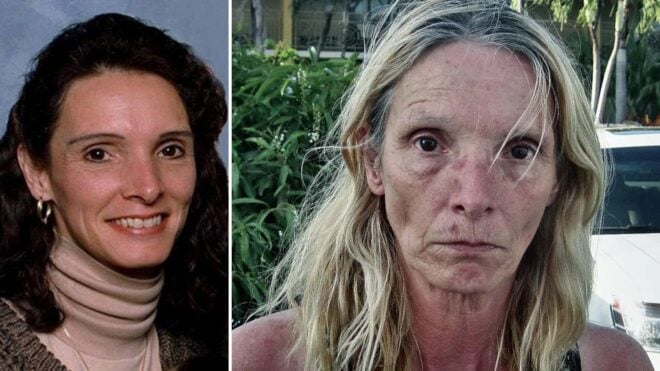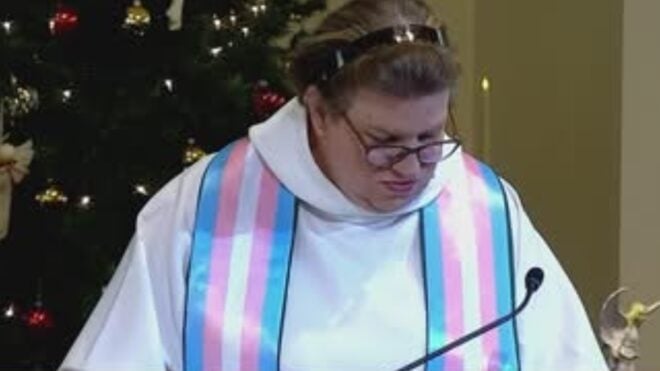There’s nothing more frustrating than buying a crisp, clean white shirt, only to have it discolor long before it goes out of style. Clothes cost enough as it is. Buying the same article of clothing over and over again is always an option!
In my household, the biggest issue is deodorant stains, which are one of the toughest stains to remove. Why? The antiperspirant: the stuff that contains aluminum compounds and blocks sweat.
Instead of continuing our trend of buying new T-shirts every six months, I set out to determine how to get white clothes white again — and how keep them that way.
There’s a ton of information online dealing with how to get stains out of white clothes and how to re-whiten white clothes. So, I decided to test several of the more popular methods, many of which utilized ingredients that I already had in my pantry, which was definitely a bonus!
Since my husband owns an extensive collection of old, dingy white T-shirts, I decided to try a different whitening method on each shirt. To be honest, I wasn’t expecting amazing results, as I would be dealing with some seriously set-in stains.
But I figured if these whitening and stain-removal methods worked at all on these deodorant stains, they will work on just about any stain and be effective at keeping clothes white. But before we get into the tough stains, let’s review how to wash white clothes to prevent staining or yellowing in the first place.
How To Wash White Clothes
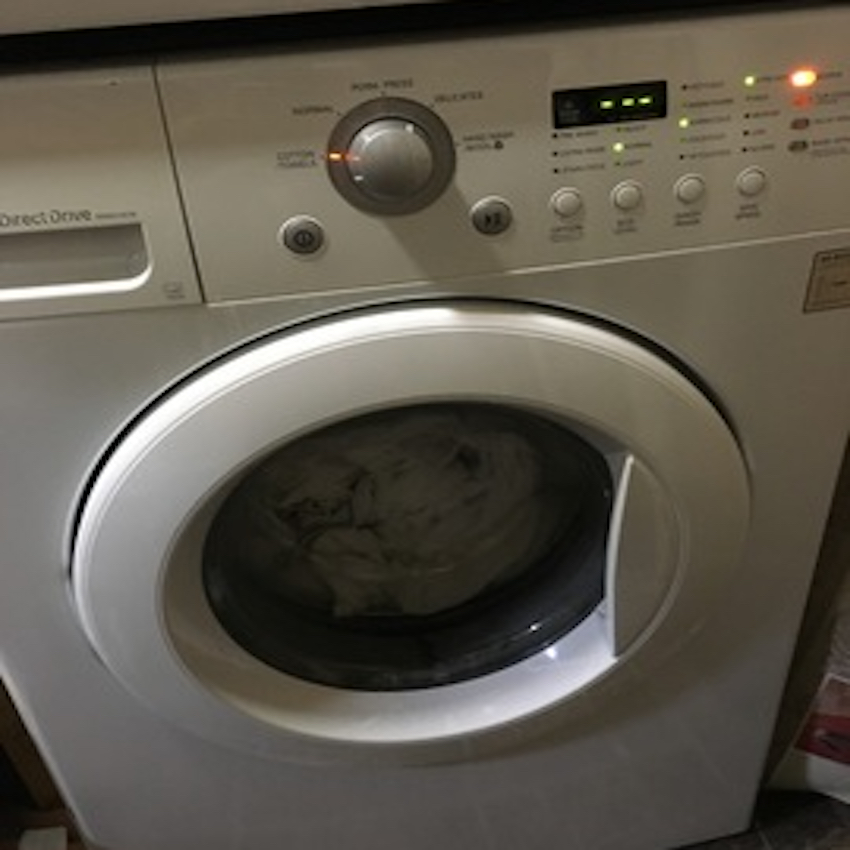
Just about everybody knows to add a dash of bleach to the white cycle and use hot water when washing white clothes — that’s standard laundry practice! And for the most part, that regimen works to brighten whites and prevent stains from setting in.
Follow this simple guide for bleaching white clothes in the washing machine to keep them looking whiter longer.
Step 1: Run Smaller Loads
In order to keep your white laundry sparkling white, run smaller loads, and don’t mix super-dingy, dirty whites in with your nicer white clothes. You may want to consider washing your white socks, undershirts, athletic wear and sheets in a separate load from your white work blouses and delicate white undergarments.
Step 2: Use Hot Water
White clothes and linens should always be washed in hot water. According to thespruce.com, “Most linens and white clothing are washed in hot water to remove germs and heavy soil.”
Step 3: Add Bleach
Don’t forget to add bleach to your whites to keep them as white as possible. If you’re wondering how to bleach white clothes, the best way to do this is to add about ½ cup of bleach to the running water in your washing machine while the tub fills up, and then add the clothes.
In a front-loading machine, there is almost always a separate, small bleach tray that releases the bleach at just the right point in the wash. Professorshouse.com also adds that you should read the label of whatever you're trying to wash as well to make share that its even bleach-able!
*Never pour bleach directly on your clothes, even if they are completely white. Undiluted bleach will destroy the fabric and lead to yellow spots or, worse, holes in your clothes.
What Causes White Clothes To Start Yellowing?
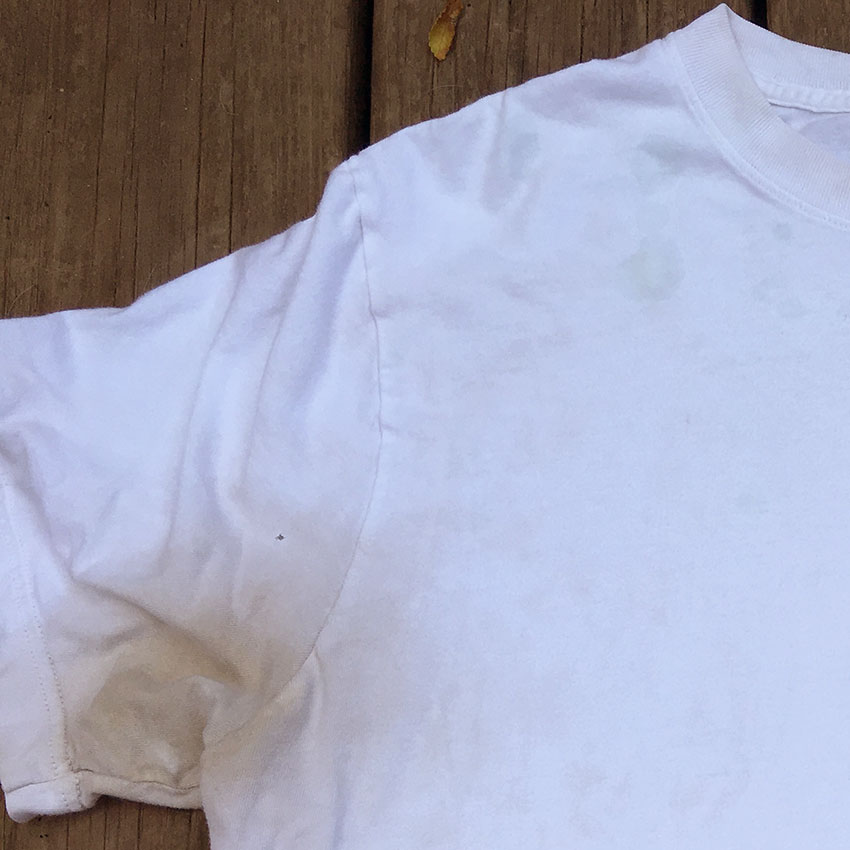
Sometimes clothes begin to take on a yellow, dingy tone despite the best laundering practices — but why? The most common causes of yellowing are sweat stains, and, perhaps ironically, deodorant stains.
Classiccleaners.net explains that the aluminum and alcohol found in many deodorant brands causes the stain. Using too much bleach, residue buildup from detergent or fabric softener, and being left in the wash too long are other factors that can lead to less-than-white whites. Here are some things you can do to stave off staining and yellowing of your clothing:
- Treat stains immediately.
- Soak shirts prone to deodorant stains in vinegar or ammonia immediately after removing and prior to washing with the rest of your white load (more on this later).
- Avoid using too much detergent or fabric softener, as this can lead to residue buildup.
- Avoid leaving your white load sitting in the washing machine. It’s important to move clothing to the dryer as soon as the wash cycle is complete.
Now that we’ve reviewed some preventative maintenance and learned what causes white clothes to start looking stained, dingy and yellow, you’re probably ready to learn how to whiten clothes.
I’d like to show you the methods I used and the results of each. At the end of my experiment, I compared my results side-by-side with a brand-new white undershirt so you can see how close (or how far!) each method gets to restoring the shirt to brand-new status — check them out below.
Method #1: White Vinegar
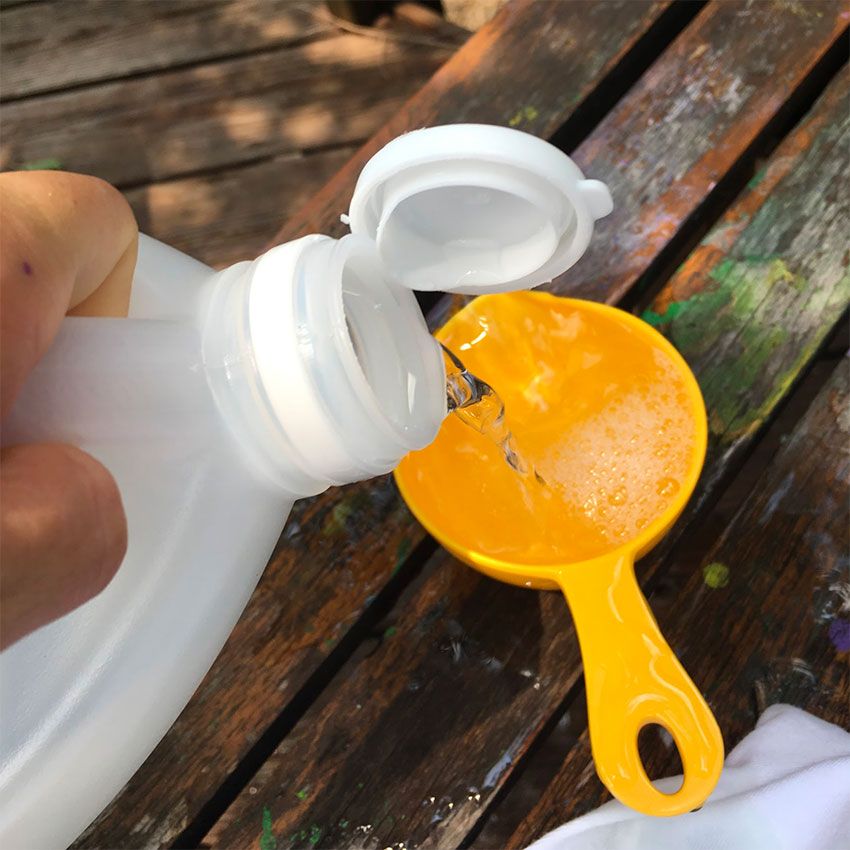
Aside from bleach, white vinegar is a pretty well-known solution. Thebalance.com praises it for restoring dingy whites to a sparkling status. Here’s how to get clothes white using white vinegar:
- Combine 2 parts white vinegar and 1 part hot water in a large bowl.
- Add shirt, and swirl until it’s fully immersed in the vinegar solution.
- Let soak for 1 hour (you can soak longer, or even overnight!).
- Wash in washing machine on hot cycle and dry completely.
Results
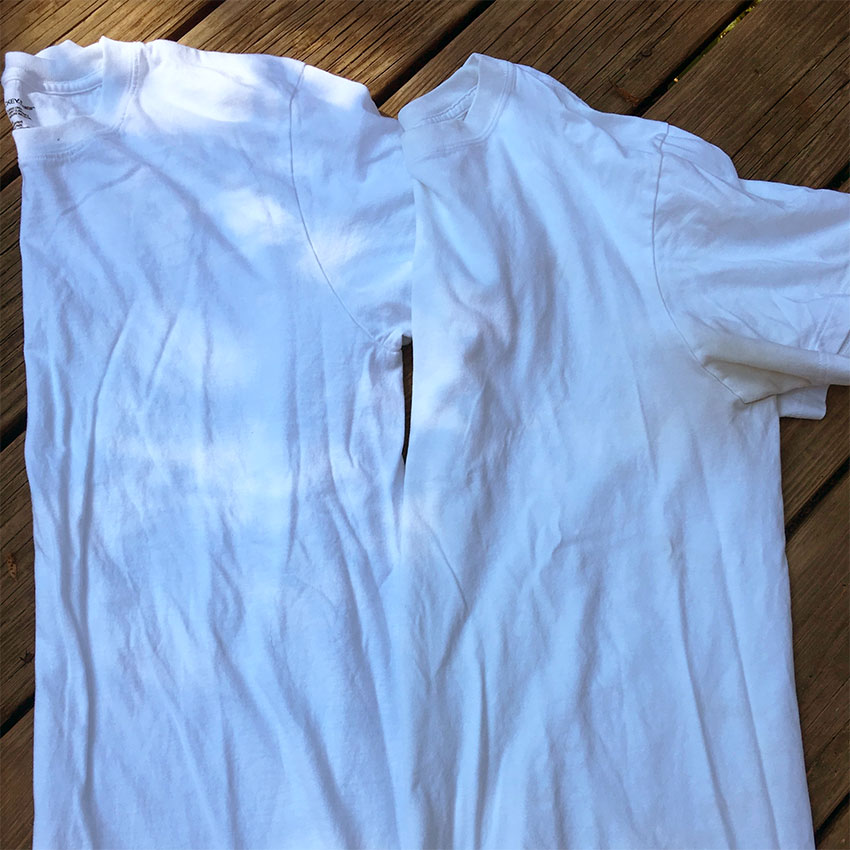
I found that soaking a shirt in white vinegar was an excellent overall method to whiten whites. Since I didn’t rub the stains or use anything abrasive, the vinegar didn’t remove them entirely, but it did lighten the yellowing around the neckline, and it did make the shirt seem whiter and cleaner overall.
Method #2: Dish Soap And Peroxide
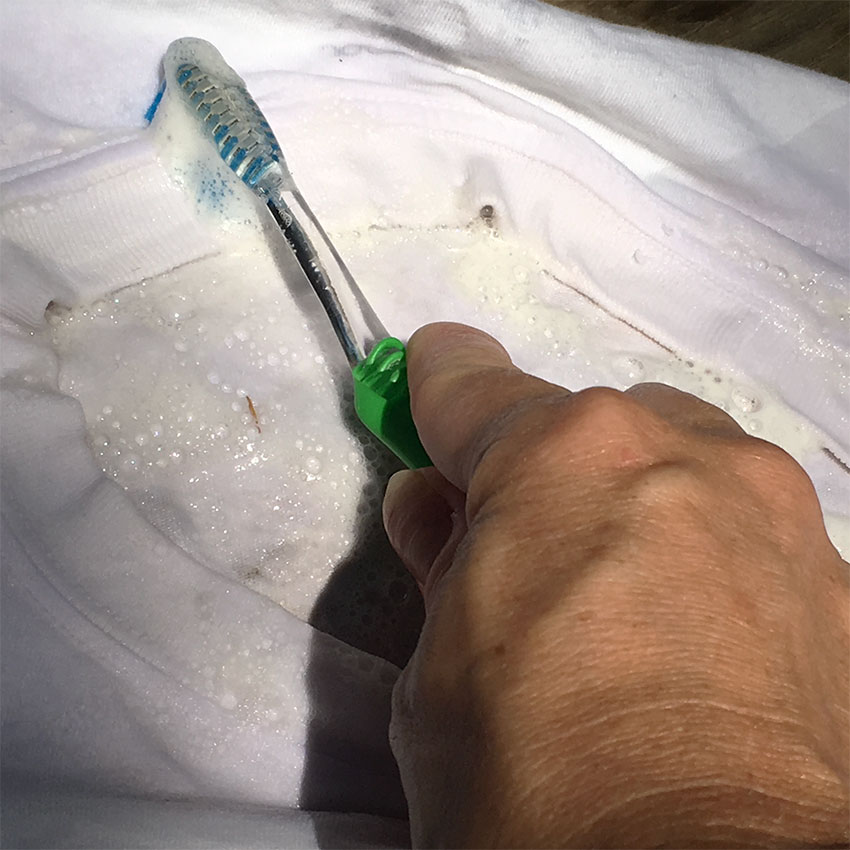
Is there anything peroxide can’t clean? If there is, I haven’t found it yet. For the second method, I chose to use peroxide mixed with dish soap, since I'd read — over and over — that it’s a miracle stain-remover. Here’s how I did it:
- Mix equal parts peroxide and dish soap in a small container.
- Pour the solution on the stained areas.
- Scrub the stains with a toothbrush or other soft-to-medium bristled brush.
- Let sit for 1 hour — or longer, depending on the severity of the stain.
- Wash in washing machine on hot cycle, and dry completely.
Results
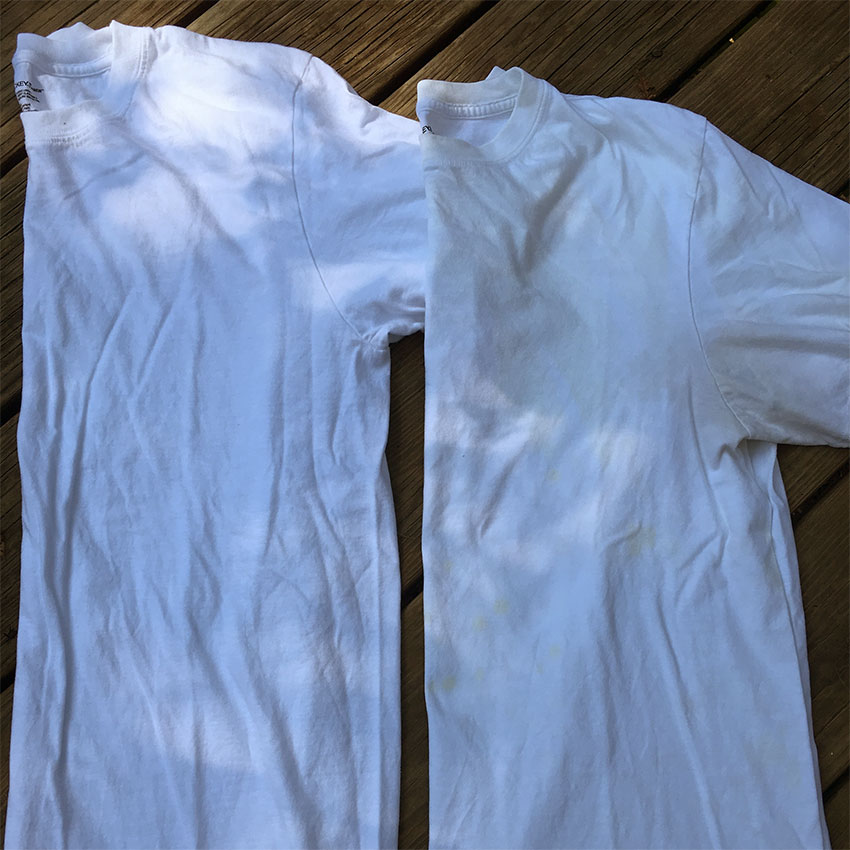
This was easily the best way to whiten clothes and the best method when it came to removing tough, set-in stains from white clothes. Although you can still see some discoloration, keep in mind that the stains I used this on were severe — bad enough that the shirt was ready for the garbage prior to this experiment.
Going forward, I’m planning to use this method to intermittently remove deodorant and other tough stains before they become set in.
Method #3: Baking Soda And Water
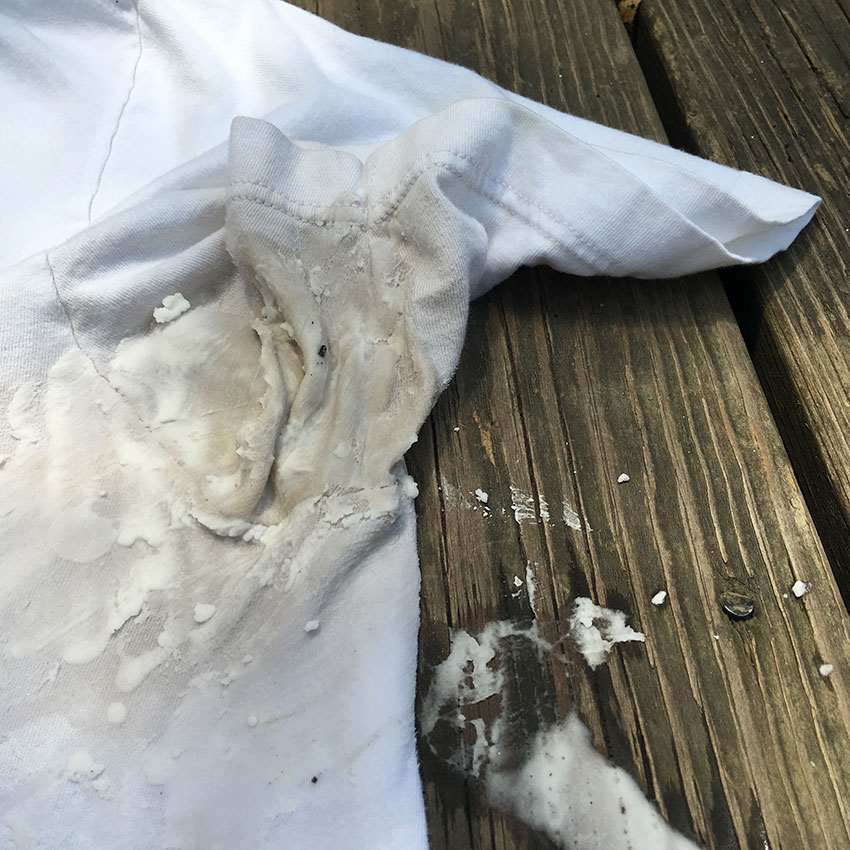
At this point, my experiment was beginning to resemble seventh-grade science class. Since I had already used vinegar and peroxide, I knew my next ingredient would be: baking soda, of course! Thespruce.com raved about its ability to clean and whiten just about anything.
Here’s how to whiten clothes with baking soda:
- Mix 2 parts baking soda to 1 part hot water and make a paste.
- Pour paste onto stains.
- Scrub the stains with a toothbrush or other soft- to medium-bristled brush.
- For best results, scrub both the inside and outside of the garment.
- Let sit for 1 hour or longer — depending on the severity of the stain.
- Wash in washing machine on hot cycle, and dry completely.
Results
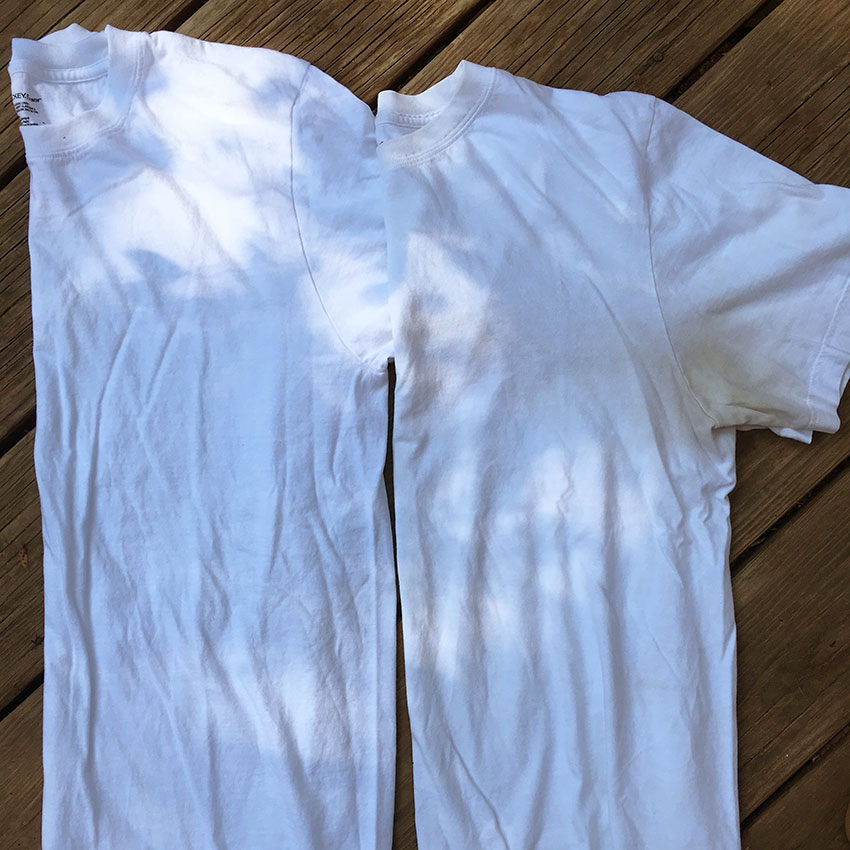
Baking soda is an excellent household cleaner and a natural way to whiten clothes, but I was less than impressed with its stain-removal abilities.
It might work well on minor stains or perhaps mixed with other ingredients, like vinegar or dish soap. However, the baking soda and water paste wasn’t one of the better performers for my experiment.
Method #4: Lemon
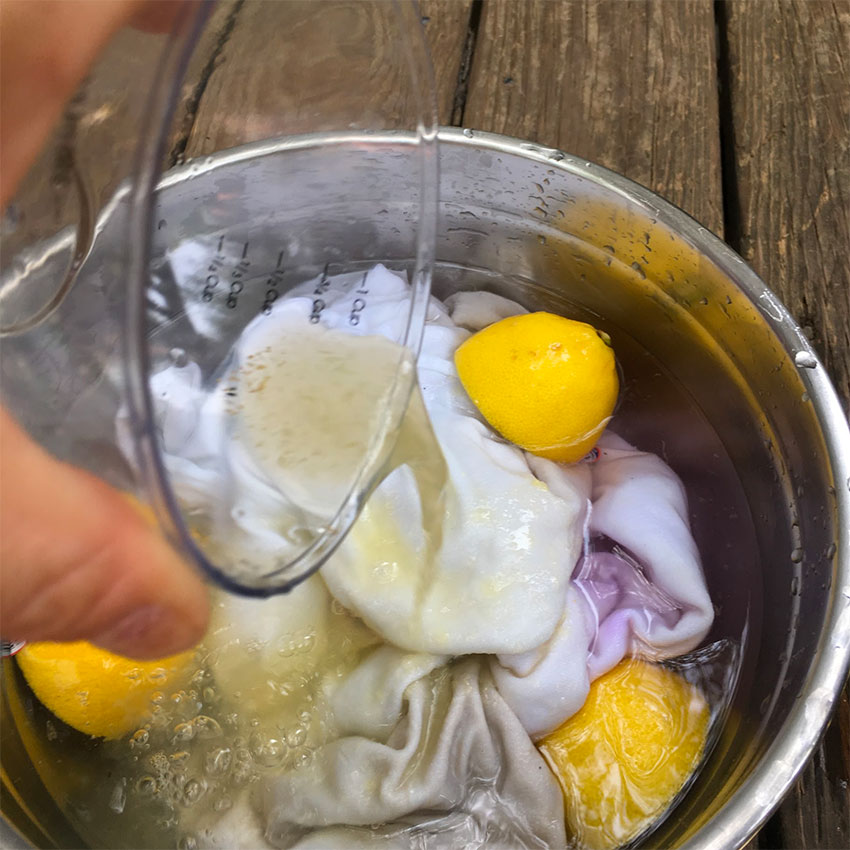
Anyone who’s sat by the pool or beach with a spray bottle of lemon water knows that lemon can naturally lighten hair. But does the same apply to white laundry? Here’s how I attempted to use lemon as a natural clothes-whitener. This recipe was enough for one shirt, so feel free to adjust accordingly.
- Juice 2 lemons and reserve both fruit and juice separately.
- Fill a large bowl with hot water, and set aside.
- Lay garment flat.
- Dampen stains with hot water.
- Pour a small amount of lemon juice onto dampened stains.
- Scrub the stains with a toothbrush or other soft- to medium-bristled brush.
- Dump the juiced lemons in the hot water, and pour remaining lemon juice in.
- Add shirt and swirl until it’s fully immersed in the lemon solution.
- Let sit for 1 hour — or longer, depending on the severity of the stain.
- Wash in washing machine on hot cycle, and dry completely.
Results
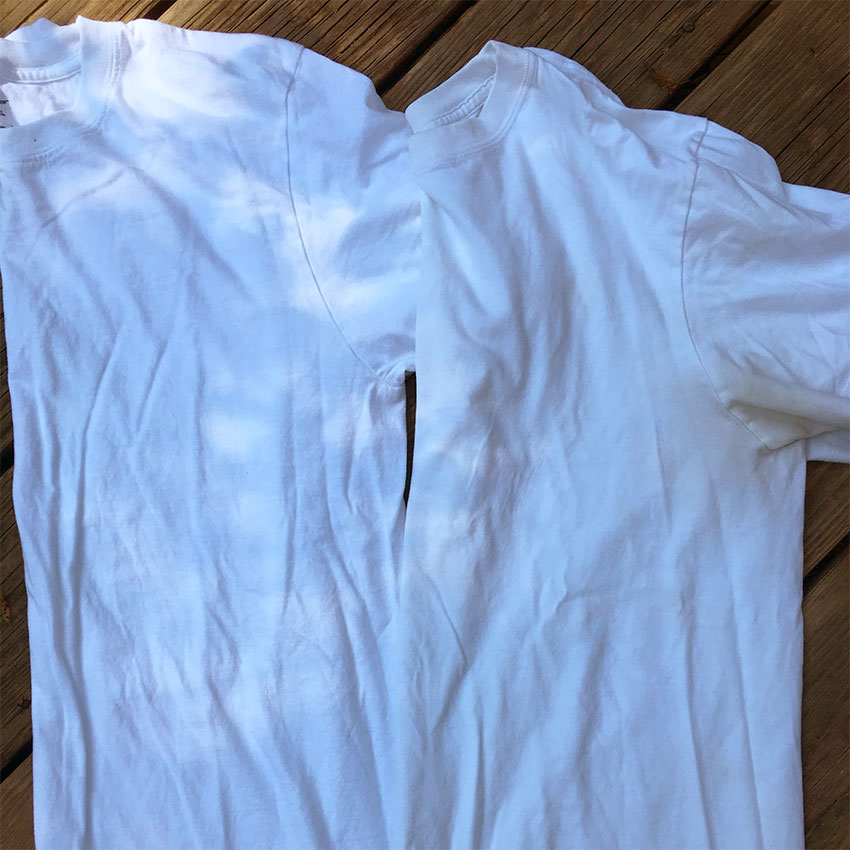
Many people swear that using lemon as a natural way to whiten clothes is great, but I found the results to be mediocre at best. I didn’t find that the shirt looked much whiter, and those tough armpit stains remained about the same as well.
Method #5: Ammonia
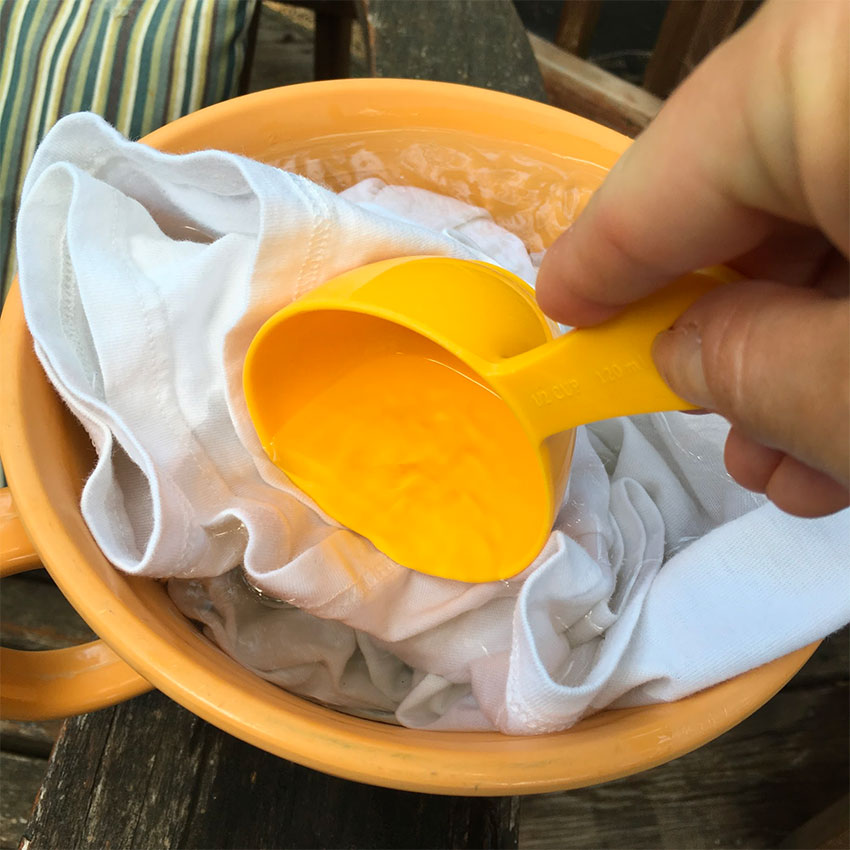
I was definitely hopeful that this would be a great method for how to whiten clothes without bleach. Thriftyfun.com says it works, but I had heard mixed reviews. So I decided to give it a try.
Here’s how to get white clothes white using ammonia:
- Mix 2 parts ammonia and 1 part hot water in a large bowl.
- Add shirt and swirl until it’s fully immersed in the ammonia solution.
- Let soak for 1 hour (don’t soak much longer, though, since ammonia is a harsh chemical).
- Wash in washing machine on hot cycle, and dry completely.
Use caution when using ammonia — exposure can be very harmful.
Results
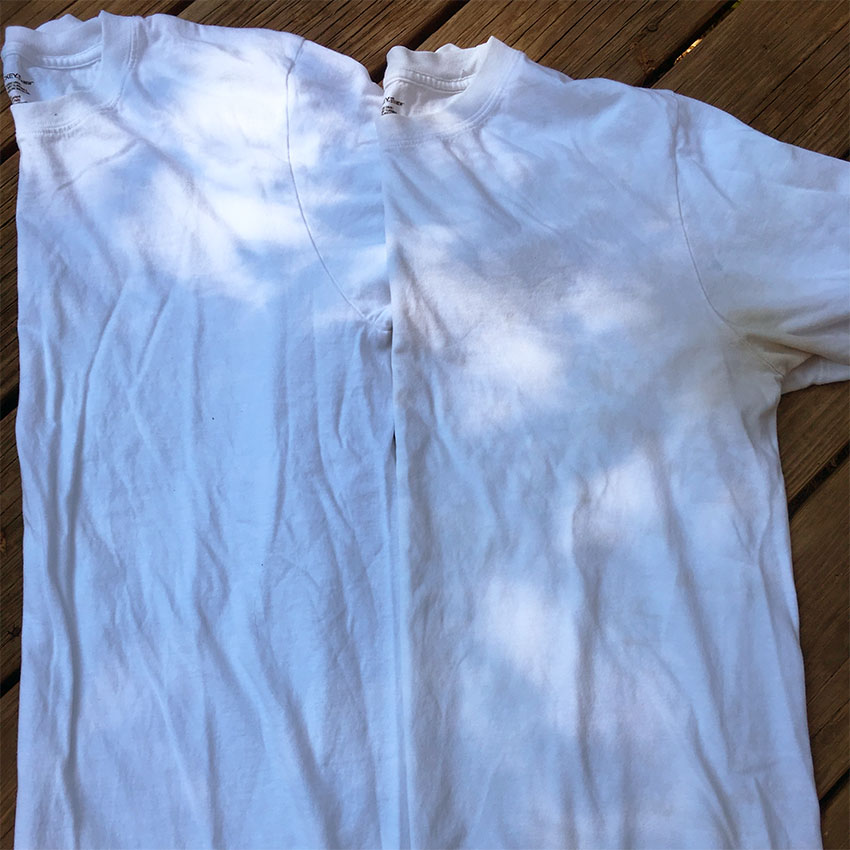
I didn’t see much improvement at all using ammonia prior to washing white clothes. Not only did it have little to no effect on the deodorant stains, it didn’t really add any overall whiteness either. Between the mediocre results and the strong, pungent smell of ammonia, I would not recommend trying this yourself.
Method #6: Meat Tenderizer
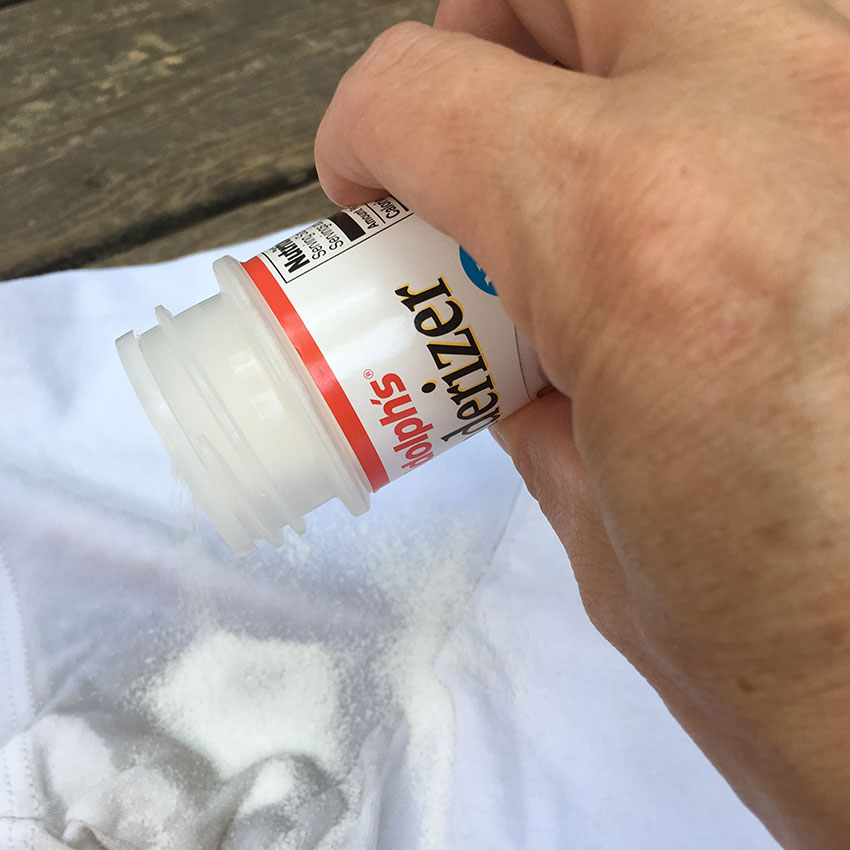
I’ve hit on some of the most popular stain-removal methods and used most of the ingredients that just about everyone has heard of to remove stains. Now, it was time to mix it up a bit.
Enter: meat tenderizer.
Yes, you read that correctly. According to topcleaningsecrets.com, “Meat tenderizers contain enzymes like bromelain that help break down the proteins in sweat without ruining the fabric.” Here’s how to whiten clothes using meat tenderizer.
- Lay garment flat and dampen stains.
- Liberally sprinkle meat tenderizer onto stains, covering both sides of the garment if possible.
- Let sit for 1 hour — or longer, depending on the severity of the stain.
- Wash in washing machine on hot cycle, and dry completely.
Results
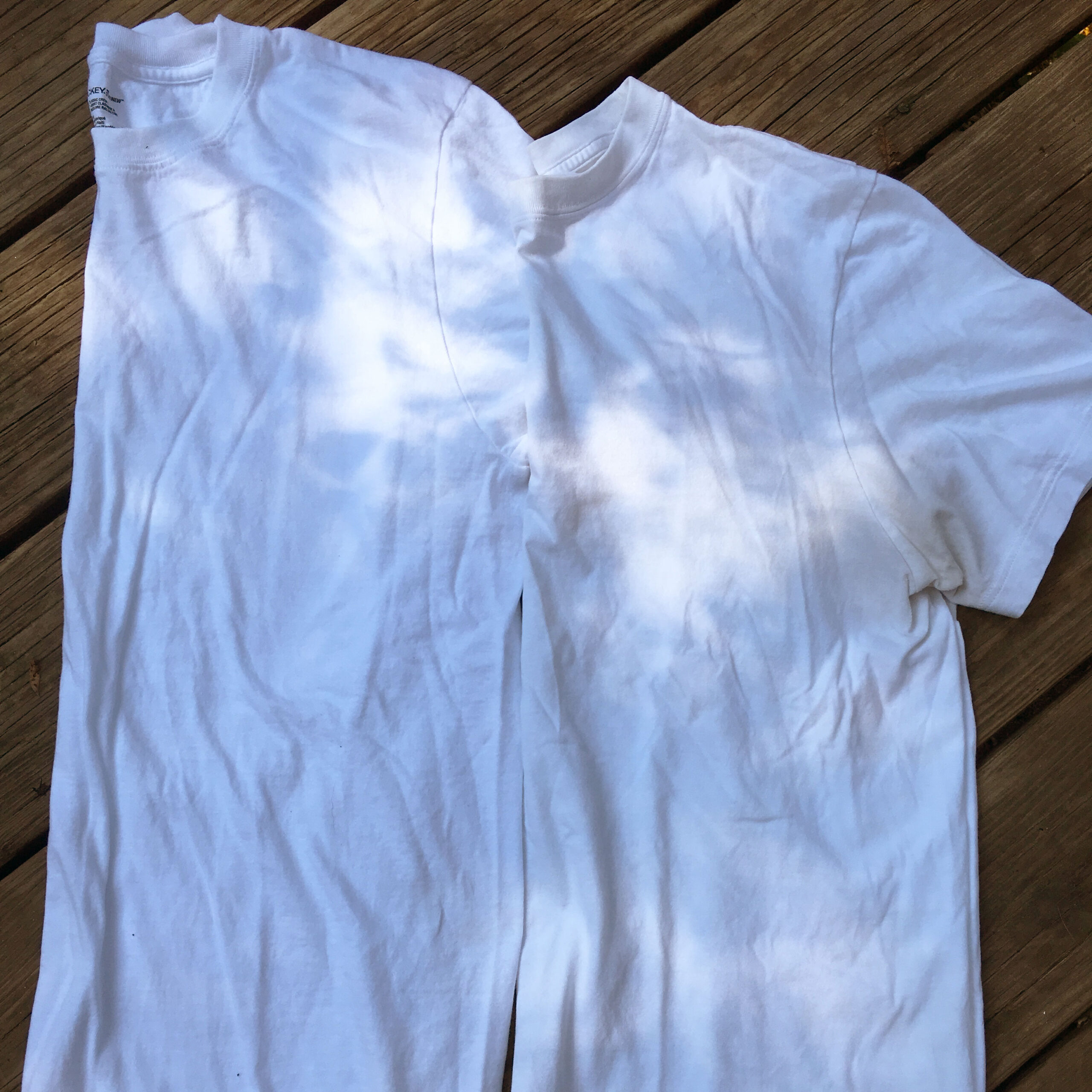
I was amazed with the results. This was one of the best ways to whiten clothes that I tested. The meat tenderizer reduced not only the appearance of the deodorant stain, but also that crusty buildup that always comes with it. It also made the whole shirt look whiter! I would definitely recommend this simple, inexpensive method.
Conclusion
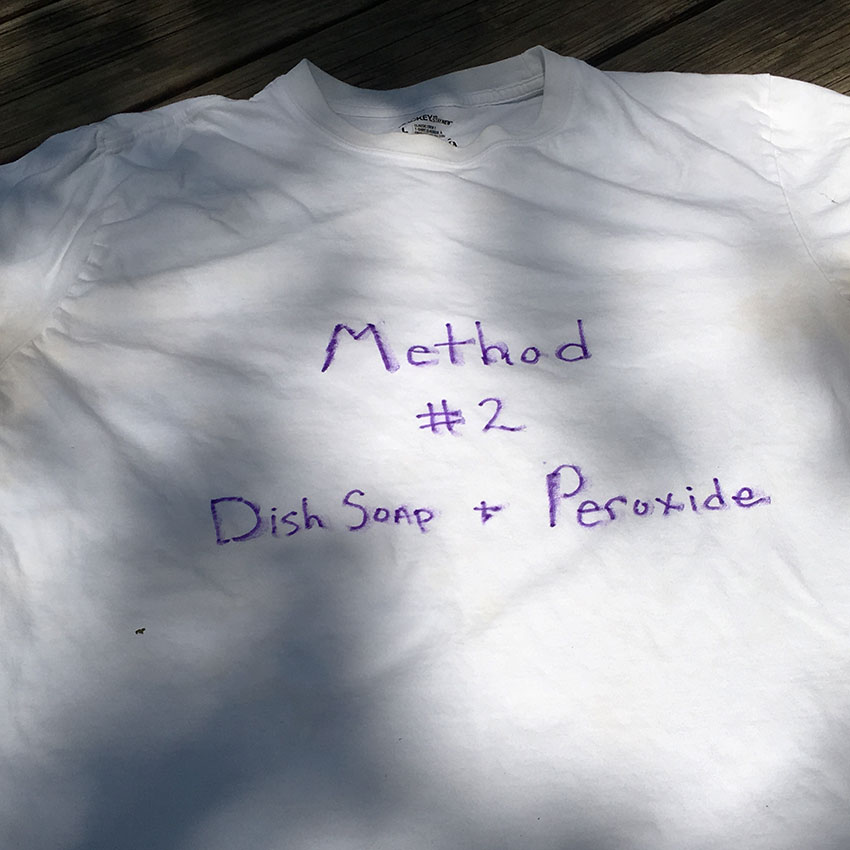
Worst whitening method: Ammonia. I do not recommend trying this out at home.
Best whitening method: Without a doubt, I found peroxide and dish soap to be the best way to whiten clothes. I could literally see the yellow stains coming out of the clothes as I was scrubbing, which you can see in the picture above. And, as I mentioned above, using this method now and then to stay on top of stains before they become caked on and set seems like an excellent way to extend the life of white undershirts, saving money in the long run.
Have you tried any of these methods to whiten white clothes? Please SHARE this article with anyone dealing with tough stains!


